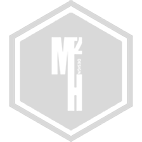Duaij Sabeel
At the start of the project, the architects decided it was necessary to merge historical architectural elements with contemporary ideas. They decided to revisit the traditional process of cooling water through the use of oversized terra-cotta vessels, also known in the local region as "Hebb". The terra-cotta vessels would be able to store and cool the water with minimal aid from supplemental mechanical cooling due to their porous nature , allowing for evaporation to occur on the surface of the vessel. During the process of evaporation, the highest-energy (and therefore the hottest) water molecules leave the exposed surface, and consequently the remaining water molecules are cooler on average. Shading the water vessels and pedestrians from the harsh heat of the sun are curving walls made out of ventilated brick. These curving brick walls become directional gestures, encouraging movement and creating a wonderful sense of journey and experience for the user. By concealing the main water vessels within these walls, the architects intended to symbolize the difficulty of finding water in the desert climate several generations ago. In other locations, the curving walls become short benches for resting and seating. The Sabeel project gives life to multiple activities within the open court, bridging the gap between people of different generations and backgrounds and facilitating moments of friendly social binding and interaction.
2014-2016
85 sq.m
undisclosed
monument
